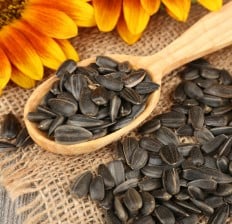THE CORN IN THE GROUND IS GROWING SLOWER THAN NORMAL
The U.S. corn planting pace eclipsed the trade’s expectations and jumped higher than the five-year average, according to the USDA’s Weekly Crop Progress Report.
As of Sunday, 71% of the U.S. corn crop had been put into the ground vs. a 70% five-year average and a trade expectation of 65%, according to Monday’s report.
The governmental agency noted that Minnesota’s corn planting surged 49% points to 84% completed vs. a week ago, while Iowa farmers added 33% more corn seeded to total 85% completed.
USDA pegged corn emergence at 31% vs. a 36% five-year average.
today’s report could be slightly negative for tonight’s corn market and neutral for soybeans.
“This is a little better than what I had expected. Soybean planting is right in-line with the five-year average. Spring wheat planting is at 78%, which is 5 points ahead of the five-year average.
The U.S. corn planting pace eclipsed the trade’s expectations and jumped higher than the five-year average, according to the USDA’s Weekly Crop Progress Report.
As of Sunday, 71% of the U.S. corn crop had been put into the ground vs. a 70% five-year average and a trade expectation of 65%, according to Monday’s report.
The governmental agency noted that Minnesota’s corn planting surged 49% points to 84% completed vs. a week ago, while Iowa farmers added 33% more corn seeded to total 85% completed.
USDA pegged corn emergence at 31% vs. a 36% five-year average.
today’s report could be slightly negative for tonight’s corn market and neutral for soybeans.
“This is a little better than what I had expected. Soybean planting is right in-line with the five-year average. Spring wheat planting is at 78%, which is 5 points ahead of the five-year average.



 Sunflower seeds
Sunflower seeds






